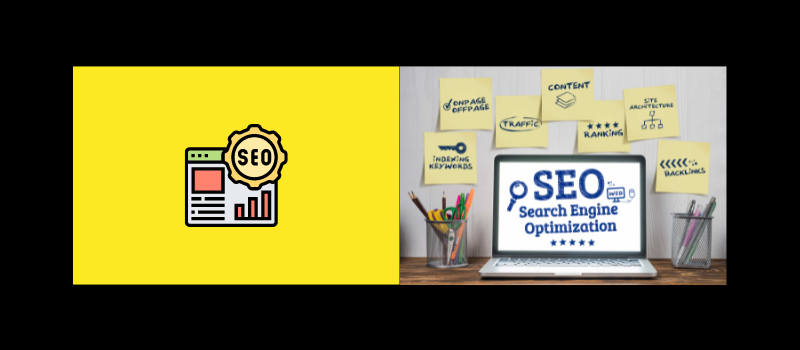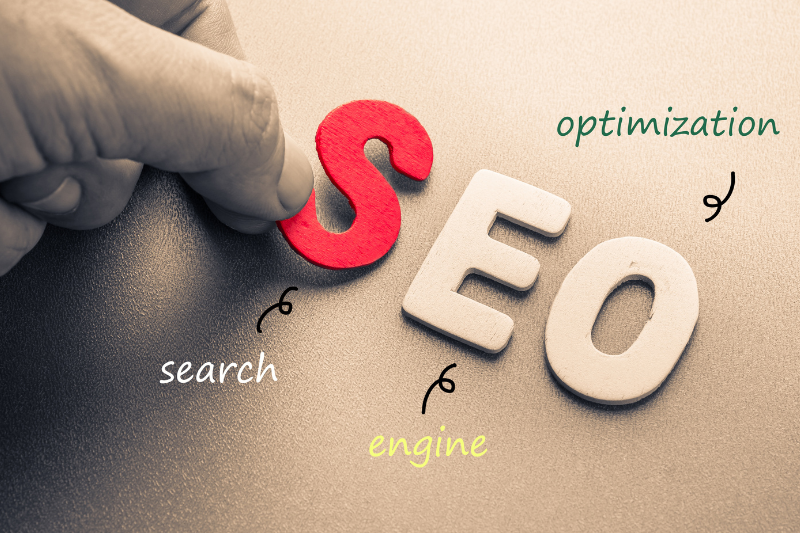Search Engine Optimisation or SEO
a daunting term for many small business owners. But it doesn’t have to be. This guide demystifies the process, offering practical steps to improve your search engine ranking. No tech jargon, just clear-cut advice. Let’s get your business found.Understanding the Importance of SEO
Consider this: 75% of people never scroll past the first page of search results. If your business isn’t on that first page, you’re missing out on a large percentage of potential customers. Unfortunately, this is the reality for many businesses. The issue often lies in not knowing how to optimise their website for search engines or believing that SEO is too complex and time-consuming.
But here’s the good news-SEO doesn’t have to be a mystery. In fact, understanding and implementing the basics of SEO can significantly boost your online visibility. SEO, or Search Engine Optimisation, is essentially the process of making your website more attractive to search engines like Google. When done right, SEO can help your business appear higher in search results, leading to more traffic, more leads, and ultimately, more sales.
In this guide, we’ll break down the fundamentals of SEO, offering you a roadmap to get your small business noticed online. We’ll cover everything from understanding search intent to mastering on-page, off-page, and technical SEO. Ready to get started? Let’s dive in.
Demystifying SEO Jargon
SEO can feel like learning a new language, but it’s more approachable than it seems. Here’s a breakdown of key terms you need to know:- Keywords: These are the words and phrases that people type into search engines when looking for information. For example, if you own a bakery, “best cupcakes near me” could be a keyword relevant to your business. Keywords are the foundation of SEO because they connect your content with what people are searching for.
- Search Intent: This refers to the reason behind a search query. Are users looking for information, trying to navigate to a specific site, or ready to make a purchase? Understanding search intent is crucial for targeting the right audience with your content.
- Ranking: This is where your website appears in the search engine results pages (SERPs). The higher your ranking, the more visible your site is to potential customers.
- Backlinks: These are links from other websites that point to your site. Backlinks are like votes of confidence in the eyes of search engines, indicating that your content is trustworthy and valuable.
- SERPs: This acronym stands for Search Engine Results Pages. It’s where your website will appear when someone types a query into a search engine. The goal is to get your site as close to the top of the SERPs as possible.
Now, let’s break down the three main types of SEO
- On-Page SEO: This involves optimising the content and structure of your website to make it more appealing to search engines. It includes things like using keywords effectively, creating high-quality content, and ensuring your site is user-friendly.
- Off-Page SEO: This focuses on building your website’s reputation and authority by earning backlinks from other reputable sites. Social media engagement and brand mentions also play a role in off-page SEO.
- Technical SEO: This refers to optimising the backend of your website to improve its performance and make it easier for search engines to crawl and index. Technical SEO includes things like website speed, mobile-friendliness, and clean code.

Understanding Search Intent in 2024
Understanding search intent is crucial in 2024. It’s the ‘why’ behind a search query-whether users are looking for information, searching for a specific product, or ready to make a purchase. Aligning your content with these intents can significantly boost your SEO efforts.
Understanding search intent allows you to create content that aligns with what your audience is looking for, which in turn, improves your chances of ranking higher in search results.
There are four main types of search intent:
- Informational: The user is looking for information. For example, “how to bake a cake.”
- Navigational: The user wants to find a specific website. For example, “Facebook login.”
- Transactional: The user is ready to make a purchase. For example, “buy running shoes online.”
- Commercial: The user is researching products or services before making a decision. For example, “best laptops for graphic design.”
For small businesses, it’s essential to identify the search intent behind the keywords you’re targeting. Are your customers looking for information, or are they ready to buy? By understanding this, you can create content that meets their needs at every stage of their journey.
Tips for Identifying Search Intent
- Look at the top-ranking pages: See what type of content is already ranking for your target keywords. Are they blog posts, product pages, or reviews? This can give you clues about the search intent.
- Use keyword modifiers: Words like “how to,” “best,” “buy,” and “reviews” can help you understand the intent behind a keyword.
- Ask your audience: Don’t be afraid to ask your customers directly what they’re looking for. Surveys and feedback forms can provide valuable insights.
On-Page SEO Fundamentals for SMBs
Keyword Research
Keyword research is the cornerstone of any successful SEO strategy. It involves identifying the words and phrases your target audience uses, allowing you to create content that meets their needs.Why is Keyword Research Important?
Without the right keywords, your content might never reach your target audience. Keywords help search engines understand what your content is about and match it with relevant queries.Techniques for Keyword Research:
- Seed Keywords: Start with broad terms related to your business. For example, if you run a pet store, “dog food” could be a seed keyword.
- Competitor Analysis: Look at the keywords your competitors are ranking for. Tools like SEMrush or Ahrefs can help you identify these keywords and uncover opportunities.
- Long-Tail Keywords: These are longer, more specific phrases that typically have lower search volume but higher intent. For example, “best grain-free dog food for small breeds” is a long-tail keyword that could attract highly targeted traffic.
Keyword Research Tools:
- Free Tools: Google Keyword Planner, Ubersuggest, AnswerThePublic
- Paid Tools: SEMrush, Ahrefs, Moz
Grab Your Free SEO Checklist: A Step-by-Step Guide for Small Businesses!
Our free SEO Checklist for Small Businesses is designed to help you implement the strategies discussed in this post.

Keyword Optimisation
Once you’ve identified your target keywords, the next step is to optimise your content for those keywords.How to Optimise Your Website
- Titles and Meta Descriptions: Include your target keyword in the title tag and meta description. This not only helps with SEO but also makes your listing more appealing to users in the SERPs.
- Headers (H1, H2, H3): Use headers to structure your content and include your target keywords where appropriate. This helps search engines understand the hierarchy of your content.
- Content: Incorporate your target keywords naturally throughout your content. Avoid keyword stuffing, which is the practice of overloading your content with keywords in an unnatural way. Instead, focus on creating high-quality, valuable content that addresses the search intent.
Content Creation for SEO
Content is king when it comes to SEO. High-quality, informative, and engaging content is what will ultimately drive traffic to your site and keep users coming back.E-A-T: Expertise, Authoritativeness, and Trustworthiness
Google uses E-A-T to evaluate the quality of content. To rank well, your content needs to demonstrate expertise, be authoritative, and be trustworthy.Tips for Creating SEO-Friendly Content:
- Target Specific Search Intent: Make sure your content aligns with the search intent behind your target keywords. If users are looking for information, provide detailed, informative content. If they’re ready to buy, make sure your product pages are optimised for conversions.
- Use Visuals: Images, videos, and infographics can make your content more engaging and help with SEO. Just make sure to optimise your visuals by using descriptive file names and alt text.
- Regularly Update Content: Keep your content fresh by regularly updating it with new information, especially if it’s a topic that evolves over time.
Off-Page SEO Fundamentals for SMBsWhile on-page SEO involves optimising your website, off-page SEO builds your site’s authority and reputation across the web.
The Importance of Backlinks
Backlinks are one of the most important factors in off-page SEO. They are links from other websites that point to your site, and they signal to search engines that your content is trustworthy and valuable.
Link-Building Strategies for SMBs:
- Guest Blogging: Write guest posts for reputable sites in your industry. In return, you’ll get a backlink to your site.
- Directory Submissions: Submit your business to online directories like Yelp or Google Business Profile. These sites often have high authority, and a backlink from them can boost your SEO.
- Broken Link Building: Find broken links on other websites and offer your content as a replacement. This can be a win-win for both parties.

Brand Mentions and Social Media Engagement
Brand mentions (when your business is mentioned on another site, even without a link) and social media engagement also contribute to your off-page SEO. The more people talk about your brand online, the more authority you build.Technical SEO Fundamentals for SMBs
Technical SEO might sound intimidating, but it’s crucial for making your website accessible and user-friendly. For instance, a slow-loading website can frustrate users and negatively impact your rankings.Website Speed and Mobile-Friendliness
Why It Matters: A slow website can be a dealbreaker for both users and search engines. Google has made it clear that page speed is a ranking factor, and studies show that a one-second delay in page load time can lead to a 7% reduction in conversions. Moreover, with the increasing use of mobile devices, your website must be mobile-friendly. If your site doesn’t load quickly or display correctly on smartphones and tablets, you’re likely to lose a significant portion of your audience.How to Improve Website Speed:
- Optimise Images: Compress images before uploading them to your site. Tools like TinyPNG can help reduce file size without sacrificing quality.
- Leverage Browser Caching: This allows your site to store some of the resources on the user’s device, so the site loads faster on subsequent visits.
- Minimize HTTP Requests: Reduce the number of elements on your page, such as scripts, images, and CSS files, to speed up load times.
Making Your Website Mobile-Friendly:
- Responsive Design: Ensure your website uses a responsive design, which automatically adjusts to fit the screen size of the device it’s being viewed on.
- Mobile-Friendly Test: Use Google’s Mobile-Friendly Test tool to check how easily a visitor can use your page on a mobile device. This tool provides suggestions on how to improve your mobile site.
Clean and Well-Structured Website Code
Why It Matters: Clean, well-structured code not only helps your site perform better but also makes it easier for search engines to crawl and index your pages. This is an often-overlooked aspect of technical SEO but can have a significant impact on your rankings.Tips for Clean Code:
- Use Semantic HTML: Properly structured HTML tags help search engines understand the content and context of your pages.
- Minify CSS, JavaScript, and HTML: Minifying your code reduces the size of your files and helps your website load faster.
- Fix Broken Links: Regularly check your site for broken links, as these can harm your SEO. Tools like Screaming Frog can help you identify and fix these issues.
Image Optimisation and Internal Linking
Image Optimisation: Images can enhance your content, but they need to be optimised for SEO. Use descriptive file names and include alt text that incorporates your target keywords. This not only helps with SEO but also improves accessibility for users who rely on screen readers.
Internal Linking: Internal links connect one page of your website to another and are essential for helping search engines understand the structure of your site. They also keep users engaged by guiding them to related content. Use descriptive anchor text that includes relevant keywords to improve both user experience and SEO.
Grab Your Free SEO Checklist: A Step-by-Step Guide for Small Businesses!
Our free SEO Checklist for Small Businesses is designed to help you implement the strategies discussed in this post.

Keeping Up with SEO in 2024
SEO is a dynamic field, and what works today may be obsolete tomorrow. As search engines continue to evolve, staying ahead of trends and algorithm updates is essential for maintaining and improving your rankings. Adapting your strategy isn’t just a smart move—it’s necessary for long-term success.The Importance of Staying Updated
Search engines like Google are constantly refining their algorithms to deliver more relevant search results. These updates can have a significant impact on your rankings, making it crucial to stay informed and agile in your SEO approach.
Looking to the Future: AI, Machine Learning, and Beyond As we move further into 2024, AI and machine learning are becoming increasingly integral to SEO. Search engines are getting smarter, using these technologies to better understand user intent and context. The role of search engines is evolving from simple information retrieval to providing personalised and context-aware results.
How to Stay Informed:
- Follow Industry Blogs: Websites like Moz, Search Engine Journal, and Neil Patel’s blog are invaluable for keeping up with the latest SEO news and trends.
- Subscribe to Google Search Central: Google’s blog offers insights and updates on algorithm changes, AI developments, and best practices.
- Engage with SEO Communities: Join forums, LinkedIn groups, or Reddit communities to connect with other professionals. These platforms are excellent for sharing knowledge and staying informed about the latest trends in AI and machine learning in SEO.
Using SEO Tools to Track Progress
SEO tools are indispensable for tracking your progress, identifying issues, and refining your strategy.Popular SEO Tools:
- Google Analytics: Track your website traffic, user behaviour, and conversion rates.
- Google Search Console: Monitor your site’s performance in search results, check for indexing issues, and submit sitemaps.
- SEMrush/Ahrefs: These tools provide in-depth analysis of your site’s SEO performance, including backlink profiles, keyword rankings, and competitor analysis.
By regularly monitoring your SEO performance and staying informed about industry changes, you can adapt your strategy and continue to improve your rankings over time.
Conclusion
SEO doesn’t have to be overwhelming, even for small businesses. By mastering the fundamentals, you can greatly enhance your online visibility and attract more customers. Remember, SEO is an ongoing journey—consistent effort will lead to sustained success. From keyword research and on-page Optimisation to building backlinks and mastering technical SEO, these strategies are all within your reach.
Remember, SEO is not a one-time task but an ongoing process. Keep learning, stay updated on the latest trends, and don’t be afraid to experiment with new tactics. The more you invest in SEO, the more you’ll see your business grow.
For those eager to learn more, there are countless resources available to help you dive deeper into the world of SEO. Whether you’re just getting started or looking to refine your strategy, the key is to take action and start optimising your site today.
Good luck, and here’s to seeing your business climb the search rankings!






